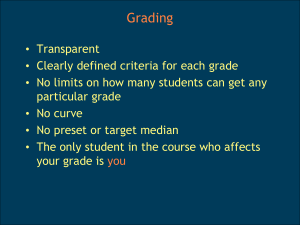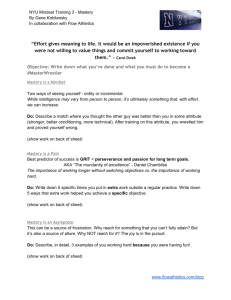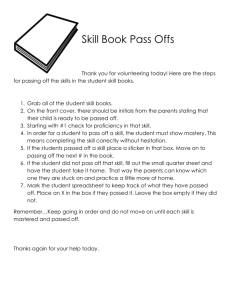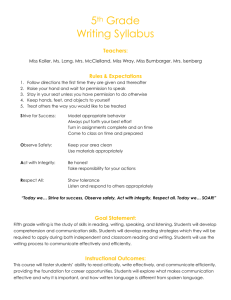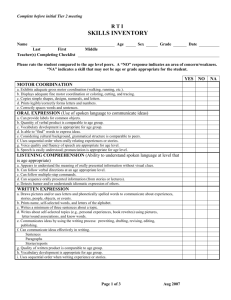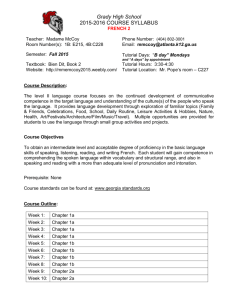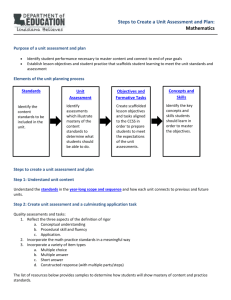File - Ashley Fenn`s Professional Portfolio
advertisement
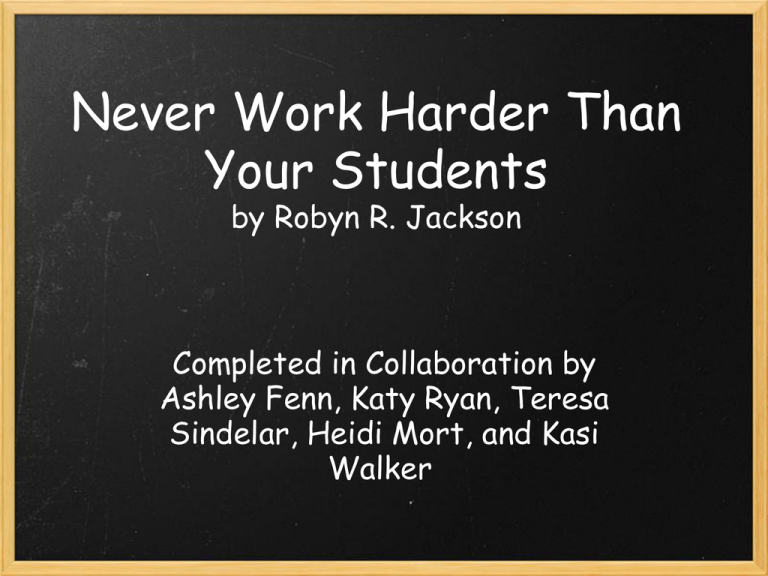
Never Work Harder Than Your Students by Robyn R. Jackson Completed in Collaboration by Ashley Fenn, Katy Ryan, Teresa Sindelar, Heidi Mort, and Kasi Walker Introduction The hardest part to starting a new adventure in life is knowing where to begin. By looking in the introduction, you can discover where you are on your road to becoming a master teacher. • Do you want to start on the factors where you are lacking the most? • Do you want to read the chapters that will be most beneficial to you • Remember that each chapter lists strategies that have to use in your own style and to meet your own needs. Good Luck on Your Professional Journey! Chapter 1 Start Where Your Students Are • Students and teachers have different values. o Master Teachers discover how to align the most important values • There are eight non cognitive characteristics that are predictors of academic success later in life in college (values students need to be successful. o o o o o o o o positive self concept realistic self-appraisa successful navigation of the system preference for long-term goals availability of a strong support person leadership experience community involvement knowledge acquired in and about a field Chapter 2 Know Where Your Students Are Going • As the teacher know your final destination. For most, that would be the standards. • Every standard has a GOAL. Content Goal-Knowing the meaning or Process Goal-applying the meaning • Match all your activities and assessments around your goals. Allign each goal with a clear purpose that leads to the learning goal. • Communicate Effectively Have a clear discrption of your goals Chapter 3 Expect to Get Your Students There • A master teacher MUST have Expectations! o Expect from yourself and your students. • How you might ask... o Communicate with your students prior instructors. Know them before you meet them. o Understand your own learning expectations for your students. o Set Goals to reach your expectations. • Have FAITH in yourself, your education, and your students Chapter 4 Support Your Students • Become more proactive about supporting students. o Anticipate confusion. o Set up red flag mechanisms to signal when intervention is necessary. o Demystify the academic process by explaining to student what they are doing and for what purpose. • To prevent confusion teach by moving from concrete ideas to those that are more abstract. o When confusion arises use questioning and error analysis. • Look for ways to support those students exhibiting mastery of the content. o Add more ambiguity or complexity to assignments. Chapter 5 Use Effective Feedback • Assignments and assessments provide the TEACHER with valuable feedback to guide future instruction. o Design instruction to help students meet objectives. Collect a variety of data. Analyze data in multiple ways. Set up red flag mechanisms to alert a need for intervention. • Assignments and assessments can provide STUDENTS with valuable feedback. o Teach student how to collect their own data and understand what their grades mean. o Teach students how to learn from failure. o Teach students to use feedback to set goals. Chapter 6 Focus on Quality, not Quantity • Teachers should be purposeful about the important concepts and not throw too much at the students It is not the amount of work that is important, it is the quality and mastery of the work that matters • Eliminate "busy-work" and make all work meaningful • Teachers must get out of "coverage mode" Don't try to teach everything, decide what is important and teach those "need to know" concepts well. • Teachers need to decide to what degree concepts need to be mastered Not every concept needs to be fully mastered and allow the students to showcase their knowledge in a variety of ways. Chapter 7 Never Work Harder Than Your Students • As the teacher, don't do ALL the work every person has a role and responsibilities • A Few of The Teacher's Responsibilities: Be well-prepared to teach Model behavior expectations Demonstrating enthusiasm and encouragement Assessing student progress • Give Students Responsibilities Have students be in charge of daily routines, homework, attendance, etc, and provide a logical consequence if not met • "Do not solve their problems; help them acquire the tools they need to solve their problems on their own" Chapter 8 Putting it All Together • Be consistent in applying mastery principles. o Every lesson, every day. • Be persistent and patient. o Pursue mastery through purposeful practice. • First, integrate one or two principles . o Start slow, add more as your skills develop. • Find an accountability partner. o Collaborate. • Reflect, evaluate and adjust. o Be open to change and focused on the goal. Appendix Tools Tool 1: The Master Teacher Trajectory Tool 2: Developing an Action Plan Tool 3: Sample Action Plan Evidence Tool 4: Reflection Sheet Tool 5: Master Teacher Observation Form Tool 6: Using the Mastery Principles to Solve Instructional Challenges Tool 7: Classroom Problems by Principle Tool 8: Guidelines for Forming a Study Group Tool 9: Developing a Student Intervention Cycle References Jackson, R. R. (2009). Never work harder than your students and other principles of great teaching. Alexandria, VA: Association for Supervision and Curriculum Development.



